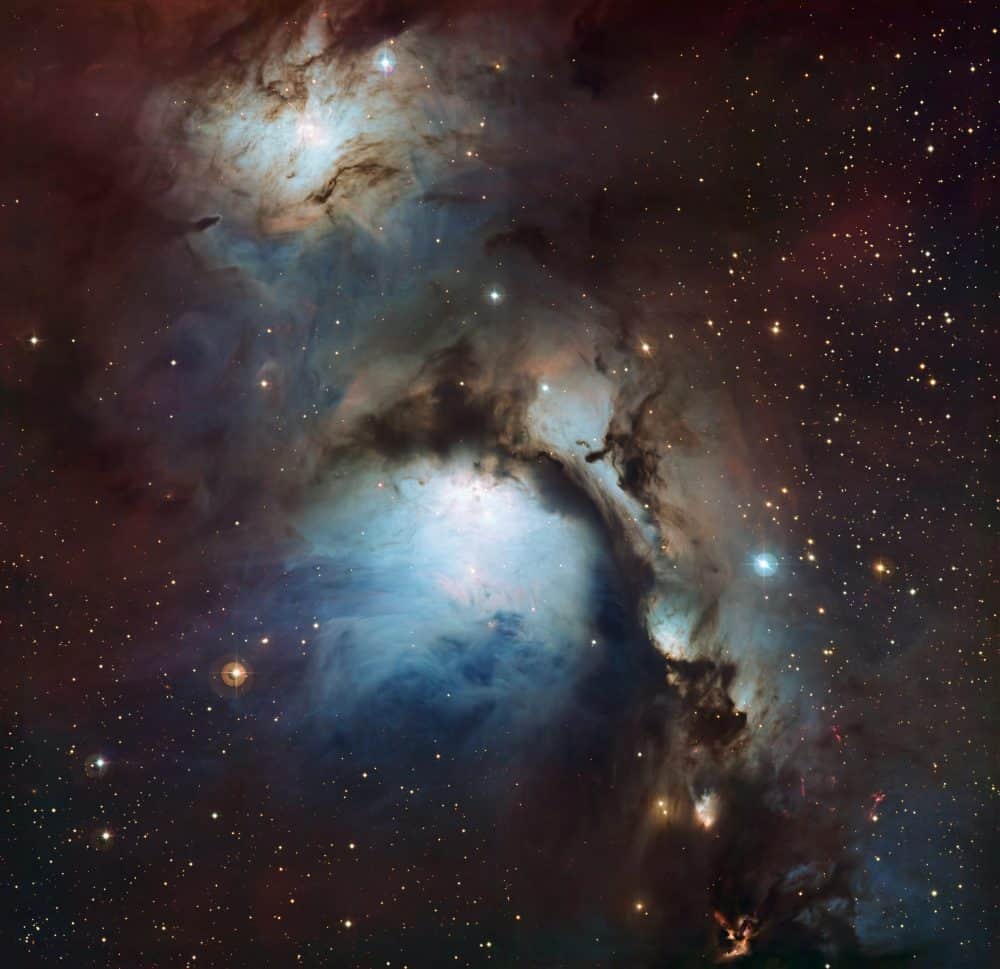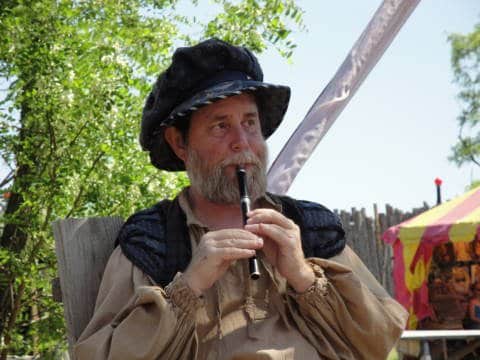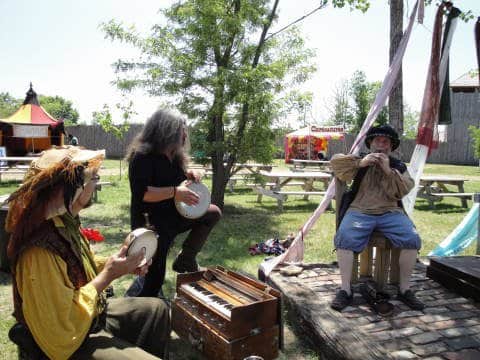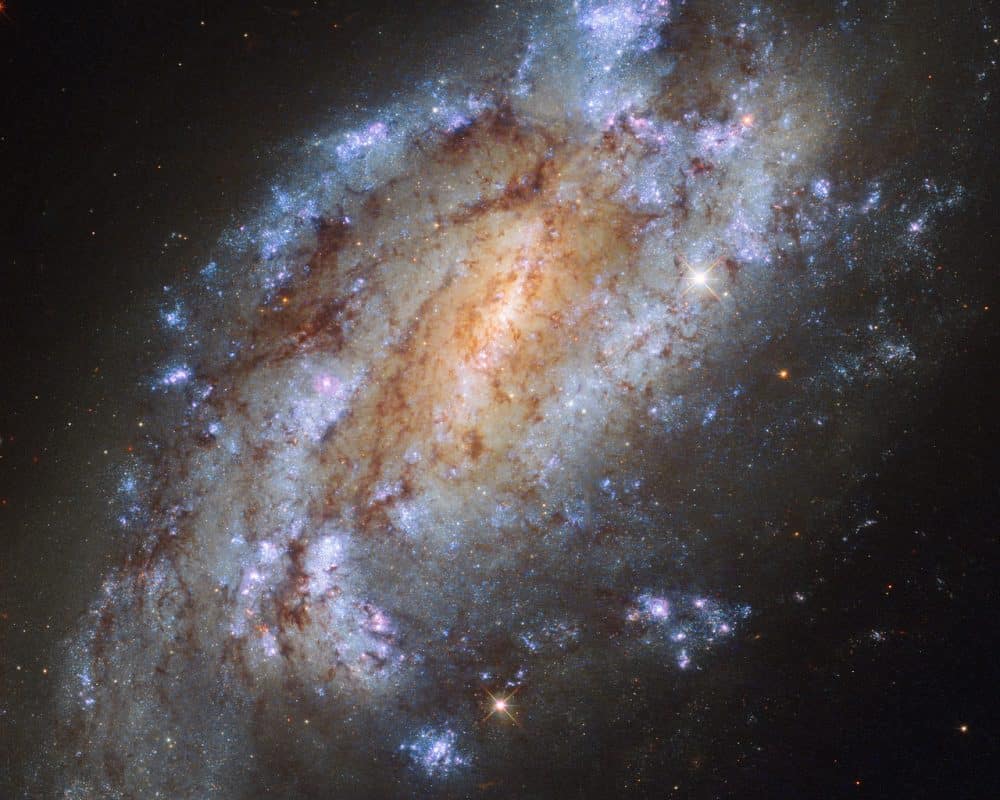Blog
Hailing from different ethnic nomadic cultures from across Inner Mongolia, the charismatic nine-member Anda Union unites a wide range of musical instruments and vocal styles to capture the essence of traditional Mongolian music while creating a new and exciting sound.
more...A new telescope facility at the Paranal Observatory in Chile has captured its very first images. Named the Search for Habitable Planets Eclipsing Ultracool Stars (SPECULOOS) Southern Observatory, the facility consists of four 1-meter telescopes — each of which is named after one of Jupiter’s Galilean moons — that will search the cosmos for potentially habitable exoplanets orbiting ultracool stars and brown dwarfs. For its “first light” image, the Europa telescope captured this view of the Carina Nebula.
The Carina Nebula (catalogued as NGC 3372; also known as the Grand Nebula, Great Nebula in Carina, or Eta Carinae Nebula) is a large, complex area of bright and dark nebulosity in the constellation Carina, and is located in the Carina–Sagittarius Arm. The nebula lies at an estimated distance between 6,500 and 10,000 light-years (2,000 and 3,100 pc) from Earth.
more...Robben Ford (born December 16, 1951) is an American blues, jazz, and rock guitarist. He was a member of the L.A. Express and Yellowjackets, and has collaborated with Miles Davis, Joni Mitchell, George Harrison, Larry Carlton and Kiss. He was named one of the “100 Greatest Guitarists of the 20th Century” by Musician magazine.
Robben Ford was born in Woodlake, California and raised in Ukiah, California. He began playing the saxophone at age 10 and the guitar at age 14. Robben and his brothers created the Charles Ford Blues Band in honor of and named after their father.
more...John Laird Abercrombie (December 16, 1944 – August 22, 2017) was an American jazz guitarist. His work explored jazz fusion, free jazz, and avant-garde jazz. Abercrombie studied at Berklee College of Music in Boston, Massachusetts. He was known for his understated style and his work with organ trios.
John Abercrombie was born on December 16, 1944, in Port Chester, New York. Growing up in the 1950s in Greenwich, Connecticut he was attracted to the rock and roll of Chuck Berry, Elvis Presley, Fats Domino, and Bill Haley and the Comets. He also liked the sound of jazz guitarist Mickey Baker of the vocal duo Mickey and Silvia. He had two friends who were musicians with a large jazz collection. They played him albums by Dave Brubeck and Miles Davis. The first jazz guitar album he heard was by Barney Kessel.
He took guitar lessons at the age of ten, asking his teacher to show him what Kessel was playing. After high school, he attended Berklee College of Music. At Berklee, he was drawn to the music of Jim Hall, particularly on the album The Bridge by Sonny Rollins, and Wes Montgomery on his albums Boss Guitar and The Wes Montgomery Trio. He met George Benson and Pat Martino while they performed at a local club and was inspired by them. He often played with other students at Paul’s Mall, a jazz club in Boston connected to the larger club, Jazz Workshop. Appearing at Paul’s Mall led to meetings with Michael Brecker, Randy Brecker, and organist Johnny Hammond Smith, who invited him to go on tour.
more...John Robert “Johnny Hammond” Smith (December 16, 1933 – June 4, 1997) was an American soul jazz and hard bop organist. Born in Louisville, Kentucky, he was a renowned player of the Hammond B-3 organ so earning “Hammond” as a nickname, which also avoided his being confused with jazz guitarist Johnny Smith.
Smith played with Paul Williams and Chris Columbo before forming his own group. His bands featured singers Etta Jones, Byrdie Green, saxophonists Houston Person, Earl Edwards, guitarists Eddie McFadden, Floyd Smith, James Clark, vibist Freddie McCoy. His career took off as he was serving as accompanist to singer Nancy Wilson. One of his last accomplishments also included Nancy Wilson. He wrote the song “Quiet Fire” for her Nancy Now!release in 1988.
more...Featuring a dozen musicians, Pink Martini performs its multilingual repertoire in over 25 languages on concert stages and with symphony orchestras throughout Europe, Asia, Greece, Turkey, the Middle East, Northern Africa, Australia, New Zealand, South America and North America. Pink Martini made its European debut at the Cannes Film Festival in 1997 and its orchestral debut with the Oregon Symphony in 1998 under the direction of Norman Leyden. Since then, the band has gone on to play with more than 70 orchestras around the world, including multiple engagements with the Los Angeles Philharmonic at the Hollywood Bowl, the Boston Pops, the National Symphony at the Kennedy Center, the San Francisco Symphony, the Cleveland Orchestra, the Sydney Symphony at the Sydney Opera House, and the BBC Concert Orchestra at Royal Albert Hall in London.
https://www.youtube.com/watch?v=R6E-B5RQUbE
more...https://www.youtube.com/watch?v=K0TH2j0-F7s
more...This new image of the reflection nebula Messier 78 was captured using the Wide Field Imager camera on the MPG/ESO 2.2-metre telescope at the La Silla Observatory, Chile. This colour picture was created from many monochrome exposures taken through blue, yellow/green and red filters, supplemented by exposures through a filter that isolates light from glowing hydrogen gas. The total exposure times were 9, 9, 17.5 and 15.5 minutes per filter, respectively.
M78 is the brightest diffuse reflection nebula of a group of nebulae that includes NGC 2064, NGC 2067 and NGC 2071. This group belongs to the Orion B molecular cloud complex and is about 1,350 light-years distant from Earth. M78 is easily found in small telescopes as a hazy patch and involves two stars of 10th and 11th magnitude. These two B-type stars, HD 38563 A and HD 38563 B, are responsible for making the cloud of dust in M78 visible by reflecting their light.
more...
Eduardo “Eddie” Palmieri (born December 15, 1936) is a Grammy Award-winning pianist, bandleader, musician, and composer of Puerto Rican ancestry. He is the founder of the bands La Perfecta, La Perfecta II, and Harlem River Drive.
Palmieri’s parents moved to New York from Ponce, Puerto Rico, in 1926, and settled in the South Bronx, a largely Hispanic neighborhood. There, he and his elder brother, Charlie Palmieri, were born. He accompanied Charlie and participated in many talent contests when he was eight years old.
Palmieri continued his education in the city’s public school system where he was constantly exposed to music, specifically jazz. He took piano lessons and performed at Carnegie Hall when he was 11 years old. His main influences were Thelonious Monk and McCoy Tyner. Inspired by his older brother, he was determined to someday form his own band – something he achieved in 1950, when he was fourteen years old. During the 1950s, Palmieri played in various bands, including Tito Rodríguez‘s.
more...Charles Daniel Richmond (December 15, 1931 – March 15, 1988) was an American jazz drummer who is best known for his work with Charles Mingus. He also worked with Joe Cocker, Elton John and Mark-Almond.
Richmond was born in New York City and started playing tenor saxophone at the age of thirteen; he went on to play R&B with the Paul Williamsband in 1955.
His career took off when he took up the drums, in his early twenties, through the formation of what was to be a 21-year association with Charles Mingus. Mingus biographer Brian Priestley writes that “Dannie became Mingus’s equivalent to Harry Carney in the Ellington band, an indispensable ingredient of ‘the Mingus sound’ and a close friend as well”.
That association continued after Mingus’ death when Richmond became the first musical director of the group Mingus Dynasty in 1980.
more...Curtis DuBois Fuller (born December 15, 1934) is an American jazz trombonist, known as a member of Art Blakey‘s Jazz Messengers and contributor to many classic jazz recordings.
Fuller’s Jamaican-born parents died when he was young; he was raised in an orphanage. While in Detroit he was a school friend of Paul Chambersand Donald Byrd, and also knew Tommy Flanagan, Thad Jones and Milt Jackson. After army service between 1953 and 1955 (when he played in a band with Chambers and brothers Cannonball and Nat Adderley), Fuller joined the quintet of Yusef Lateef, another Detroit musician. In 1957 the quintet moved to New York, and Fuller recorded his first sessions as a leader for Prestige Records.
Alfred Lion of Blue Note Records first heard Fuller playing with Miles Davis in the late 1950s, and featured him as a sideman on record dates led by Sonny Clark (Dial “S” for Sonny, Sonny’s Crib) and John Coltrane (Blue Train). Fuller led four dates for Blue Note, though one of these, an album with Slide Hampton, was not issued for many years. Other sideman appearances over the next decade included work on albums under the leadership of Bud Powell, Jimmy Smith, Wayne Shorter, Lee Morgan and Joe Henderson (a former roommate at Wayne State University in 1956).
more...https://www.youtube.com/watch?v=1TxN4HpTid4&list=PL299C51123B3559C7
more...November 17 1952-2018
Bob Bielefeld Memorial
I recently found out a trusted musician & friend passed away.
Bob Bielefeld worked with a variety of flutes and wind instruments, most often at Renaissance Festivals. I did two seasons with him at the Chippewa Falls Renaissance Faire in 2010/11.
He was a gentle, kind, sensitive, cheerful, diligent, steadfast, a serious musician, a pleasure to work with and a gentleman.
Often when working at Renaissance Festivals, the artists and or particularly musicians are not so cordial or hospitable to one another, often feeling competitive. Ego Maniacs displaying their brawn rather than their talent (they wished they had); if they have any talent at all lol. Sometimes not and sometimes incredible.
Bob was a pivotal exception as a musician and a human being.
Have a great new adventure Bob.
And thank you for your wonderful disposition & work.
Fare thee well Bob Bielefeld!
We love you!
Performing at the Chippewa Valley Renaissance Faire 2011.
with Polly Weiss, Billy Miller and mick laBriola.
Roughly 50 million light-years away lies a somewhat overlooked little galaxy named NGC 1559. Pictured here by Hubble’s Wide Field Camera 3, this barred spiral lies in the little-observed southern constellation of Reticulum(The Reticule).
NGC 1559 has massive spiral arms chock-full of star formation, and is receding from us at a speed of about 1300 km/s. The galaxy contains the mass of around ten billion Suns — while this may sound like a lot, that is almost 100 times less massive than the Milky Way. Although NGC 1559 appears to sit near one of our nearest neighbours in the sky — the Large Magellanic Cloud (LMC), this is just a trick of perspective. In reality, NGC 1559 is physically nowhere near the LMC in space — in fact, it truly is a loner, lacking the company of any nearby galaxies or membership of any galaxy cluster.
Despite its lack of cosmic companions, when this lonely galaxy has a telescope pointed in its direction, it puts on quite a show! NGC 1559 has hosted a variety of spectacular exploding stars called supernovae, four of which we have observed — in 1984, 1986, 2005, and 2009 (SN 1984J, 1986L, 2005df [a Type Ia], and 2009ib [a Type II-P, with an unusually long plateau]).
more...Cecil Payne (December 14, 1922 – November 27, 2007) was an American jazz baritone saxophonist born in Brooklyn, New York. Payne also played the alto saxophone and flute. He played with other prominent jazz musicians, in particular Dizzy Gillespie and Randy Weston, in addition to his solo work as bandleader.
Payne received his first saxophone at the age of 13, asking his father for one after hearing “Honeysuckle Rose” performed by Count Basie with Lester Young soloing. Payne took lessons from a local alto sax player, Pete Brown. He studied at Boys High School, Bedford-Stuyvesant.
Payne began his professional recording career with J. J. Johnson on the Savoy label in 1946. During that year he also began playing with Roy Eldridge, through whom he met Dizzy Gillespie. His earlier recordings would largely fall under the swing category, until Gillespie hired him. Payne stayed on board until 1949, heard performing solos on “Ow!” and “Stay On It”. In the early 1950s he found himself working with Tadd Dameron, and worked with Illinois Jacquet from 1952 to 1954. He then started freelance work in New York City and frequently performed during this period with Randy Weston, whom Payne worked with until 1960. Payne was still recording regularly for Delmark Records in the 1990s, when he was in his seventies, and indeed on into the new millennium.
more...Clark Virgil Terry Jr. (December 14, 1920 – February 21, 2015) was an American swing and bebop trumpeter, a pioneer of the flugelhorn in jazz, composer, educator, and NEA Jazz Masters inductee.
He played with Charlie Barnet (1947), Count Basie (1948–51),Duke Ellington (1951–59), Quincy Jones (1960), and Oscar Peterson (1964-96). He was also with The Tonight Show Band from 1962 to 1972. Terry’s career in jazz spanned more than 70 years, during which he became one of the most recorded jazz musicians ever, appearing on over 900 recordings. Terry also mentored many musicians including Quincy Jones, Miles Davis, Herbie Hancock, Wynton Marsalis, Pat Metheny, Dianne Reeves, and Terri Lyne Carrington among thousands of others.
Terry was born to Clark Virgil Terry Sr. and Mary Terry in St. Louis, Missouri, on December 14, 1920. He attended Vashon High School and began his professional career in the early 1940s, playing in local clubs. He served as a bandsman in the United States Navy during World War II. His first instrument was valve trombone.
https://www.youtube.com/watch?v=NpNAKrFLqfU
more...Flamenco Fridays featuring Bulerias y Tomatito
more...More Posts
- The Cosmos with M31
- Otis Redding Day
- Elvin Jones Day
- World Music with Las Hijas del Sol
- Daily Roots with the Gaylads
- The Cosmos with the Milky Way Black Hole
- Ron “Pigpen” McKernan Day
- James Clay Day
- Guitar Shorty Day
- Wilbur Ware Day
- World Music with Davlatmand Kholov
- Daily Roots with the Clarendonians
- KingRasJohn on ReverbNation
- Performing with KingRasJohn 9-7-2019
- The Cosmos with Sh2-284 IC443 The Jellyfish Nebula
- Chrissie Hynde Day
- Little Milton Day
- Buddy Holly Day
- Sonny Rollins Day
- World Music with Garifuna





